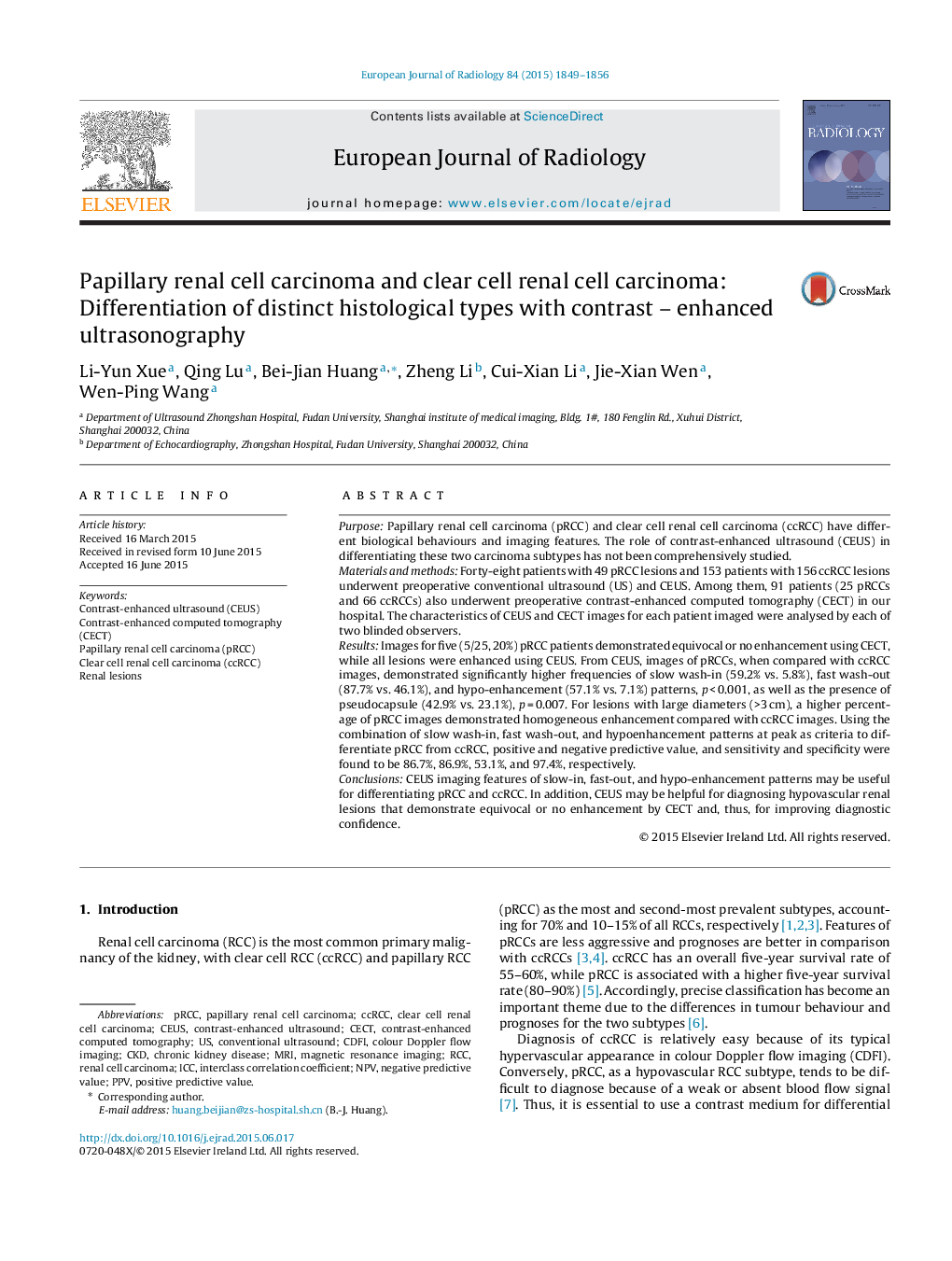| Article ID | Journal | Published Year | Pages | File Type |
|---|---|---|---|---|
| 4225162 | European Journal of Radiology | 2015 | 8 Pages |
•Slow wash-in, fast wash-out and hypoenhancement at peak was more common in pRCCs compared with ccRCCs.•Among lesions larger than 3 cm, more frequency of homogeneous enhancement was detected in pRCCs than in ccRCCs, while the characteristic of homogeneity made no difference between the two subtypes with the long diameter ≤3 cm.•CEUS could be helpful in diagnosing hypovascular renal lesions that demonstrated equivocal or no enhancement by CECT and for improving the diagnostic confidence.•The morbidity of RCC was much higher in patients with end-stage renal disease than in the general population, and CEUS can be employed in these patients with non-nephrotoxic contrast agents, more safely than CECT.
PurposePapillary renal cell carcinoma (pRCC) and clear cell renal cell carcinoma (ccRCC) have different biological behaviours and imaging features. The role of contrast-enhanced ultrasound (CEUS) in differentiating these two carcinoma subtypes has not been comprehensively studied.Materials and methodsForty-eight patients with 49 pRCC lesions and 153 patients with 156 ccRCC lesions underwent preoperative conventional ultrasound (US) and CEUS. Among them, 91 patients (25 pRCCs and 66 ccRCCs) also underwent preoperative contrast-enhanced computed tomography (CECT) in our hospital. The characteristics of CEUS and CECT images for each patient imaged were analysed by each of two blinded observers.ResultsImages for five (5/25, 20%) pRCC patients demonstrated equivocal or no enhancement using CECT, while all lesions were enhanced using CEUS. From CEUS, images of pRCCs, when compared with ccRCC images, demonstrated significantly higher frequencies of slow wash-in (59.2% vs. 5.8%), fast wash-out (87.7% vs. 46.1%), and hypo-enhancement (57.1% vs. 7.1%) patterns, p < 0.001, as well as the presence of pseudocapsule (42.9% vs. 23.1%), p = 0.007. For lesions with large diameters (>3 cm), a higher percentage of pRCC images demonstrated homogeneous enhancement compared with ccRCC images. Using the combination of slow wash-in, fast wash-out, and hypoenhancement patterns at peak as criteria to differentiate pRCC from ccRCC, positive and negative predictive value, and sensitivity and specificity were found to be 86.7%, 86.9%, 53.1%, and 97.4%, respectively.ConclusionsCEUS imaging features of slow-in, fast-out, and hypo-enhancement patterns may be useful for differentiating pRCC and ccRCC. In addition, CEUS may be helpful for diagnosing hypovascular renal lesions that demonstrate equivocal or no enhancement by CECT and, thus, for improving diagnostic confidence.
